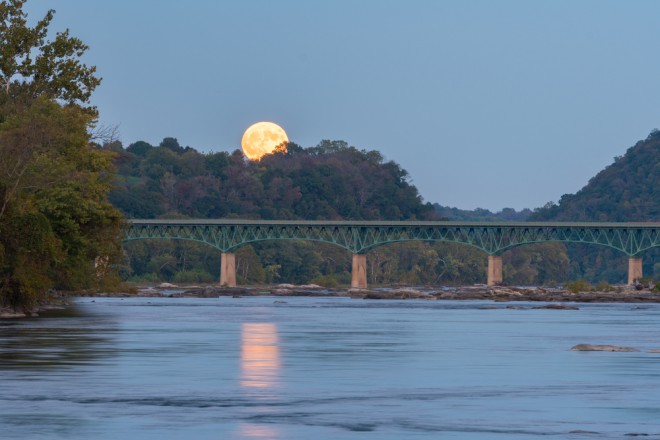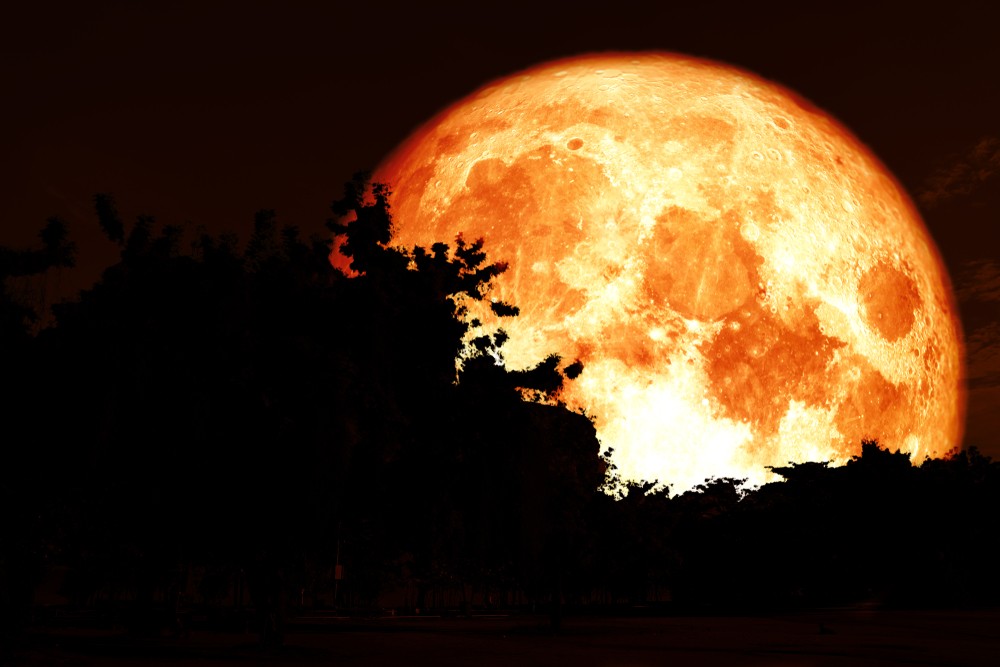Those of us who live in the northern hemisphere are somewhat deprived of observing the starry sky in the early autumn months, or it is more difficult to do so. A few times during this time, the stars, planets and the Milky Way are obscured by the presence of some very beautiful full moons. But if the moon excites you, then you are in luck. Those of you who will be watching the night sky in October will be able to observe the Hunter's Moon on October 24, a version of the full moon that has long been an important event in traditional folklore and remains an object of interest to astronomers.
Hunter's Moon is also known as the blood red or blood moon and refers to the full moon that occurs in October (this time October 24, rises at 6:45 p.m). It is heralded by the harvest moon, which is the full moon closest to the autumnal equinox (September 22-23).
The Hunter's Moon usually appears in October, except every four years, when it does not appear until November. The moon is said to have been named by the first settlers of North America, who were in the moonlight in October, they hunted deer and thus prepared winter shelter for the coming winter.

A typical moon rises 50 minutes later each day, and a Hunter's moon just 30 minutes later, which means that sunset and sunrise are not that far apart. The period of light it is thus slightly longer, which according to tradition was especially convenient for hunters and farmers, who could thus finish their work.
Since winter always meant the risk of starvation in pre-industrial times, it was the hunter's moon receives special honor both in Indian tribes and in Northern Europe. Native Americans they hunted deer and foxes on the full moon in October and thus prepared a supply of food for the winter. The fields were harvested in late September or early October, and the animals that came to collect the last grains of the harvest were therefore easier to spot. Similar importance of the hunter's moon is also recognized in Europe, where they also hunted animals after the harvest and before winter. But the term was not used in Europe until contact with Native Americans during the colonization of North America.

Interesting facts
Sometimes it does trades the hunter's moon for the harvest moon, as the harvest moon occurs every 4 years in October instead of September. When this happens, the hunter's moon is in November.
Other full moons also traditionally have names: the Wolf Moon in January, the Strawberry Moon in May, the Sturgeon Moon in July, the Cold Moon in December and the Flower Moon in April. Each full moon has different characteristics due to the location of the ecliptic - ie. path around the Sun - in your own time. Moon names vary by source.
The Hunter's Moon is associated with holidays. In the Northern Hemisphere, among the Native Americans and in some places in Western Europe, they used to have on this day feast day. But the hunter's moon festival has not been recorded since 1700. However, in Lafayette, Indiana, USA, the Hunter's Moon Festival has been held every year in the second half of September or the first half of October since 1968.






